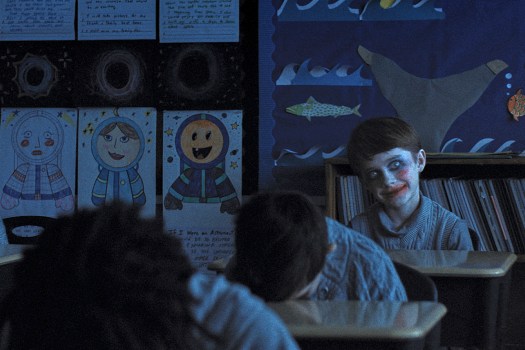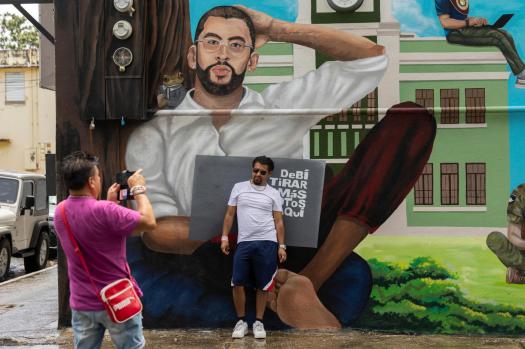By AP Education Writer JOCELYN GECKER
Math teacher Ana Seplveda sought to make geometry enjoyable for her honors class in the sixth grade. She reasoned that her soccer-loving students would be curious to see how mathematical ideas relate to the game. She sought assistance from ChatGPT.
The chatbot produced a five-page lesson plan in a matter of seconds, with the topic that geometry is used in soccer on the field, in the ball, and even in stadium architecture!
It clarified the positioning of angles and forms on a soccer field. “Why are those shapes important to the game?” was one of the suggested conversation starters for the classroom. It suggested a project where students would use protractors and rulers to design their own stadium or soccer field.
“It has changed my life to use AI,” said Seplveda, a teacher at a Dallas dual language school who uses ChatGPT to translate everything into Spanish. Lesson planning, parent communication, and student involvement are all being aided by it.
Artificial intelligence tools are revolutionizing the teaching profession nationwide as teachers use them to create lessons, grade assignments, create quizzes and worksheets, and cut down on paperwork. Many claim that the technology has improved their performance at work by freeing up their time.
Six out of ten American teachers in K–12 public schools utilized artificial intelligence (AI) tools for their work during the previous academic year, according to a poll released Wednesday by Gallup and the Walton Family Foundation. High school and early-career teachers were the most likely to use these tools. In April, it polled almost 2,000 educators across the country.
According to Gallup research analyst Andrea Malek Ash, who wrote the survey, respondents who use AI tools on a weekly basis believe that they save roughly six hours per week, indicating that the technology may help reduce teacher burnout.
Some schools are implementing policies and training for instructors to help them avoid taking shortcuts that shortchange pupils as they deal with concerns about students abusing technology.
According to Maya Israel, an associate professor of educational technology and computer science education at the University of Florida, there are state-level AI guidelines for schools in about two dozen states, but there is variation in how much of it is used by educators and schools.
Israel stated, “We want to make sure that AI isn’t replacing the judgment of a teacher.”
Related Articles
-
Anthropic wins ruling on AI training in copyright lawsuit but must face trial on pirated books
-
Frei: Tech is advancing, your standard of living isn t
-
Music streaming service Deezer adds AI song tags in fight against fraud
-
Pope Leo XIV flags AI impact on kids intellectual and spiritual development
-
New York Daily News and other outlets ask judge to reject OpenAI effort to keep deleting data
Teachers should be mindful that chatbots are useful for low-level grading, such as multiple-choice exams, but less effective when nuance is needed. “The final grading decision needs to remain with the educator, and students should be able to notify teachers if the grading is too harsh or inconsistent,” she said.
Approximately 80% of educators who use AI technologies report that it saves them time on administrative or work-related chores like creating worksheets, tests, and quizzes. Additionally, roughly 60% of educators that utilize AI technologies reported that their work is getting better when it comes to editing student works or providing comments.
AI has changed the way I instruct. According to Mary McCarthy, a high school historical studies teacher in the Houston area who has utilized AI technologies for assistance with lesson preparations and other chores, it has also improved my weekends and given me a better work-life balance.
McCarthy claimed that the AI tool training she received from her school system has aided her in modeling appropriate use for her students.
According to McCarthy, if I’m on the soapbox, AI is terrible and children will become stupid if we don’t teach them how to use the technology. As the adult present in the room, I feel obligated to assist them in navigating this future.
Since ChatGPT’s late 2022 introduction, opinions on artificial intelligence’s place in education have drastically changed. It was first prohibited in schools across the nation, but many have since looked for ways to use it in the classroom. There are still several concerns around student abuse and overuse: According to the report, over half of teachers are concerned that students’ usage of AI may impair their capacity for critical, autonomous thought as well as their ability to persevere while solving problems.
Gaining knowledge of artificial intelligence can help teachers identify instances in which pupils are abusing it.
According to Colorado high school English teacher Darren Barkett, there are telltale signs that assignments are generated by artificial intelligence (AI) technologies, such as the lack of complicated sentences and grammatical faults. He claimed that in order to make lesson plans and grade essays and multiple-choice tests, he uses ChatGPT himself.
Because of worries about data privacy and other issues, Lindsay Johnson, an art teacher at a middle school in suburban Chicago, stated that she only utilizes AI tools that have been approved by her school and are acceptable to use with children. She stated that she only uses technology in the later phases of projects to make sure students are comfortable with their abilities.
Johnson requested her eighth pupils to create a portrait of a significant figure in their lives as part of their final exam. Johnson offered generative AI to pupils who needed assistance creating the background after they had finished the last details on their subject’s face. After verifying with the IT department of her district that the design program passed their privacy screener, she utilized an AI feature within Canva.
“As an art educator, my objective is to introduce them to the various tools available and to teach them how to use them,” she added. A few pupils showed no interest in the assistance. Half of the students declared that they had a vision and will continue to pursue it.
Several private foundations provide funding for the Associated Press’s educational coverage. All content is the exclusive responsibility of AP. Visit AP.org to view the guidelines for AP when working with philanthropies, as well as a list of funded coverage areas and supporters.











